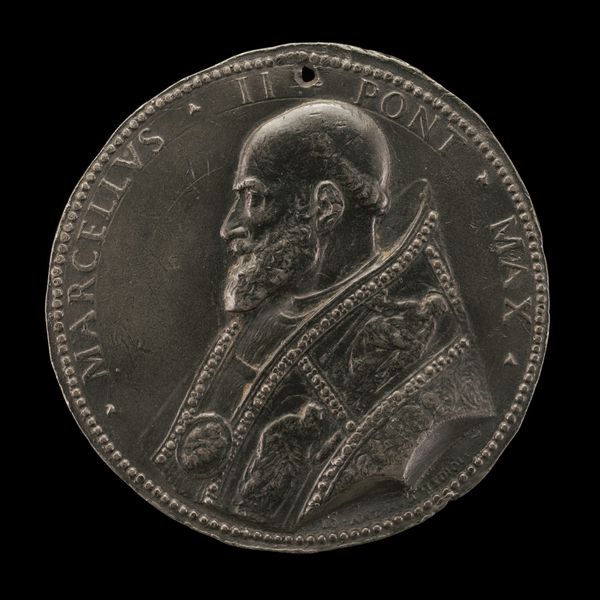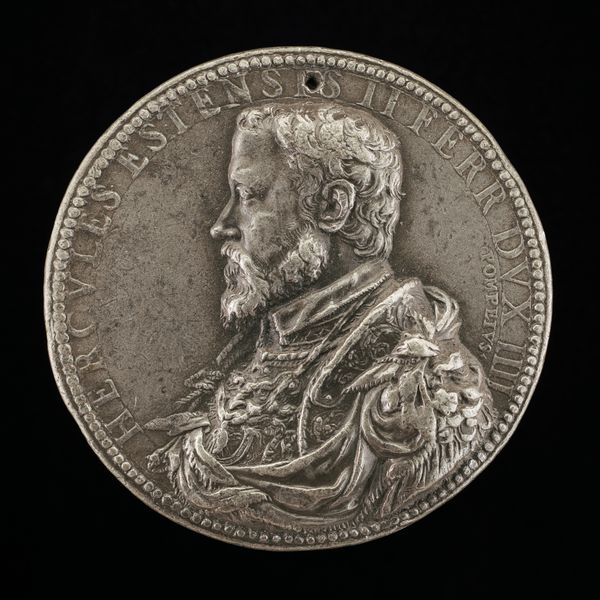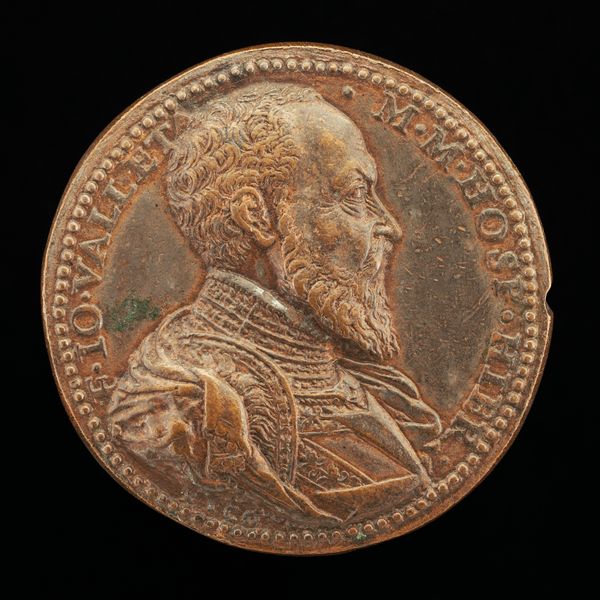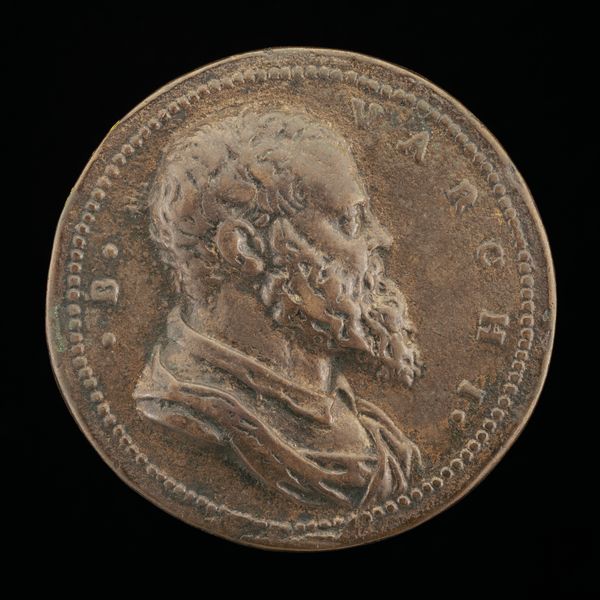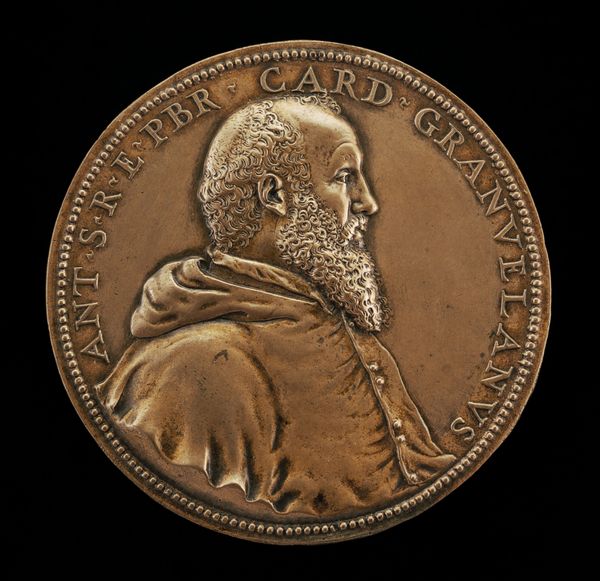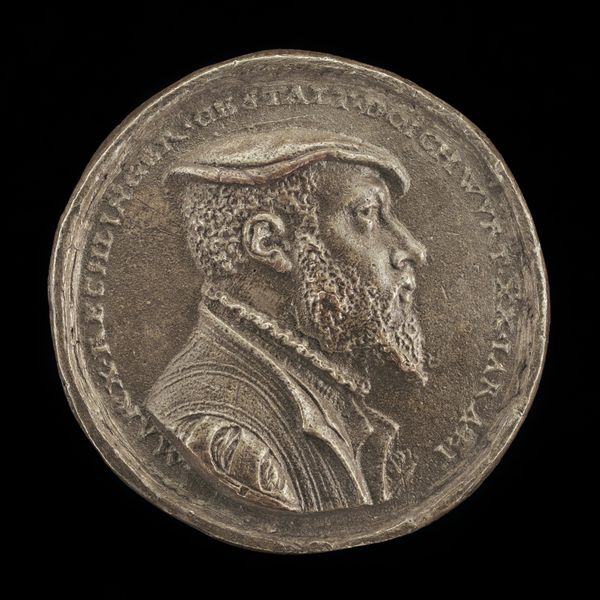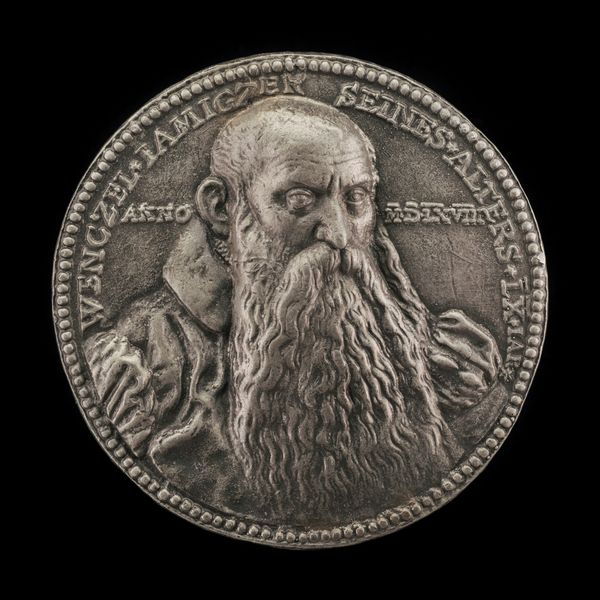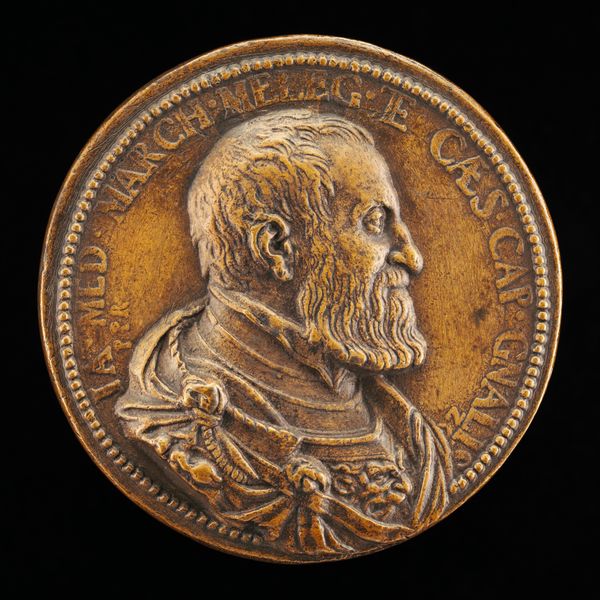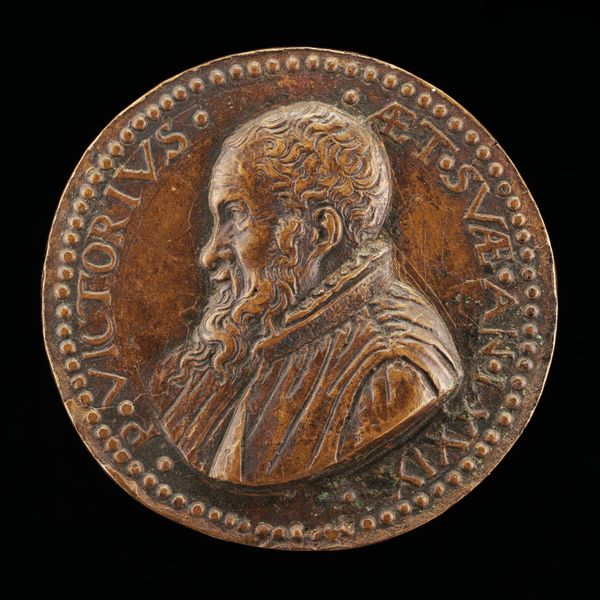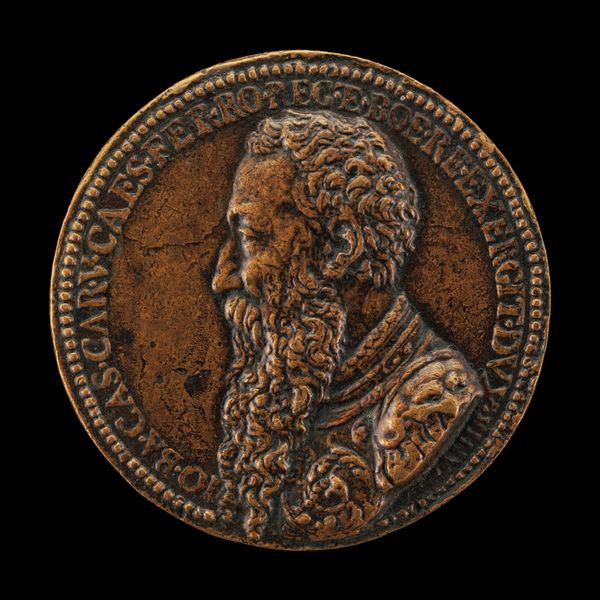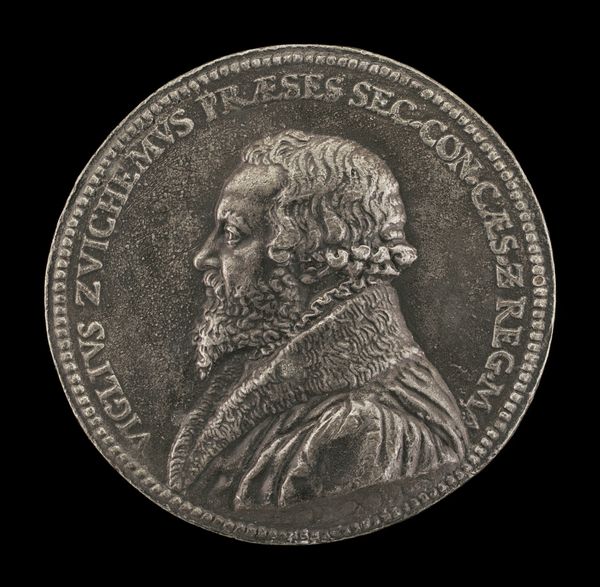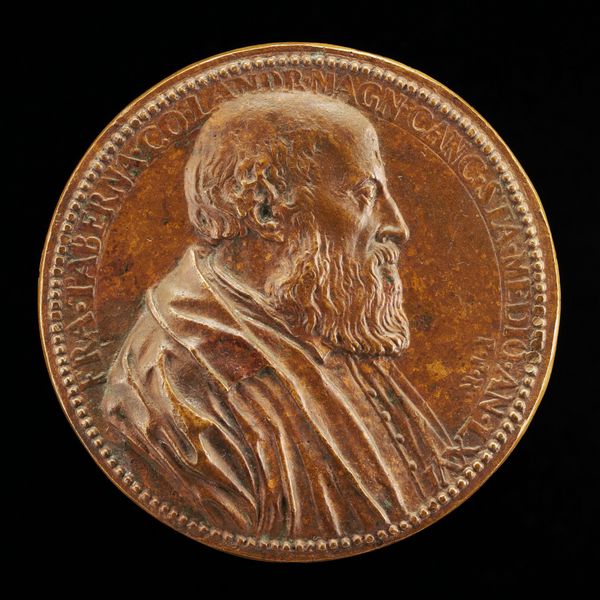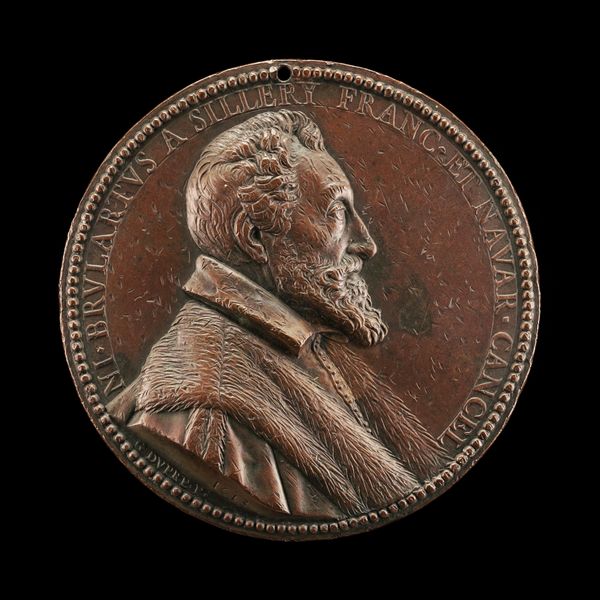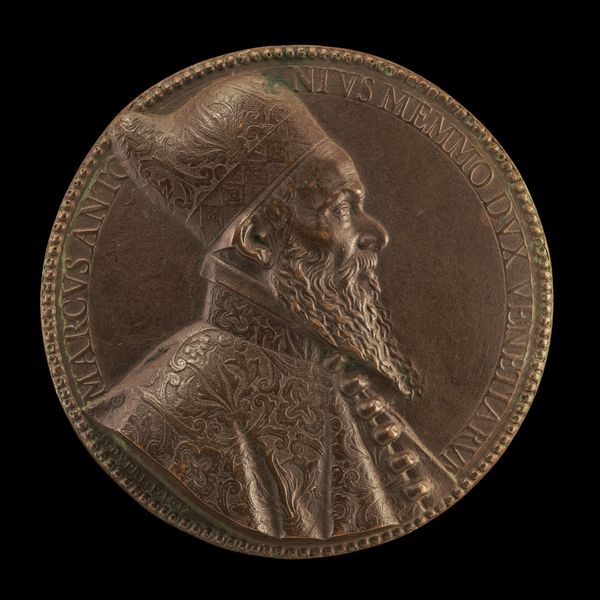
Julius III (Giammaria Ciocchi del Monte, 1487-1555), Pope 1550 c. 1555
0:00
0:00
metal, relief, sculpture
#
medal
#
metal
#
sculpture
#
relief
#
sculpture
#
italian-renaissance
Dimensions: overall (diameter): 8.08 cm (3 3/16 in.) gross weight: 90.6 gr (0.2 lb.)
Copyright: National Gallery of Art: CC0 1.0
Editor: This is a metal medal from around 1555, portraying Pope Julius III. Giovanni Antonio de' Rossi is credited with its creation. I’m struck by how detailed the relief is, especially the Pope’s beard and the intricate designs on his robe. What symbols do you notice in this artwork, and how might they speak to its historical and cultural context? Curator: Beyond the portrait itself, which echoes classical profiles, observe the papal tiara depicted on the cope – a clear symbol of authority and divine mandate. The repetition of imagery serves to amplify his power. Consider how these symbols would resonate with audiences during a time of religious reformation and political upheaval. Does the inclusion of these motifs hint at a specific message? Editor: It feels like the artist is reinforcing the Pope’s power through familiar iconography, but also through repetition of his image and symbols of papacy. It almost feels like a response to the questioning of religious authority that was happening at the time? Curator: Precisely! This medal acts almost like a carefully constructed brand – reinforcing papal authority using symbolic language everyone would recognize. Each element, meticulously rendered, projects a carefully curated image, cementing his place within a lineage of power. Now, reflect on how the physical form itself - a medal, designed for distribution - plays into this idea. Who was the intended audience, and what was the medal's purpose beyond mere commemoration? Editor: So, it's not just art; it’s a propaganda piece meant to broadcast and solidify Julius’s position and power, using readily understood symbols. I never thought about a medal carrying such heavy cultural weight. Curator: Exactly! Medals like these give us glimpses into the visual language of power and the dialogue between artists, patrons, and the public. Examining their symbolism unlocks layers of meaning that reveal the complex tapestry of their time. Editor: I'll definitely be looking at art differently now, focusing on the cultural memory embedded in seemingly simple images and materials.
Comments
No comments
Be the first to comment and join the conversation on the ultimate creative platform.
